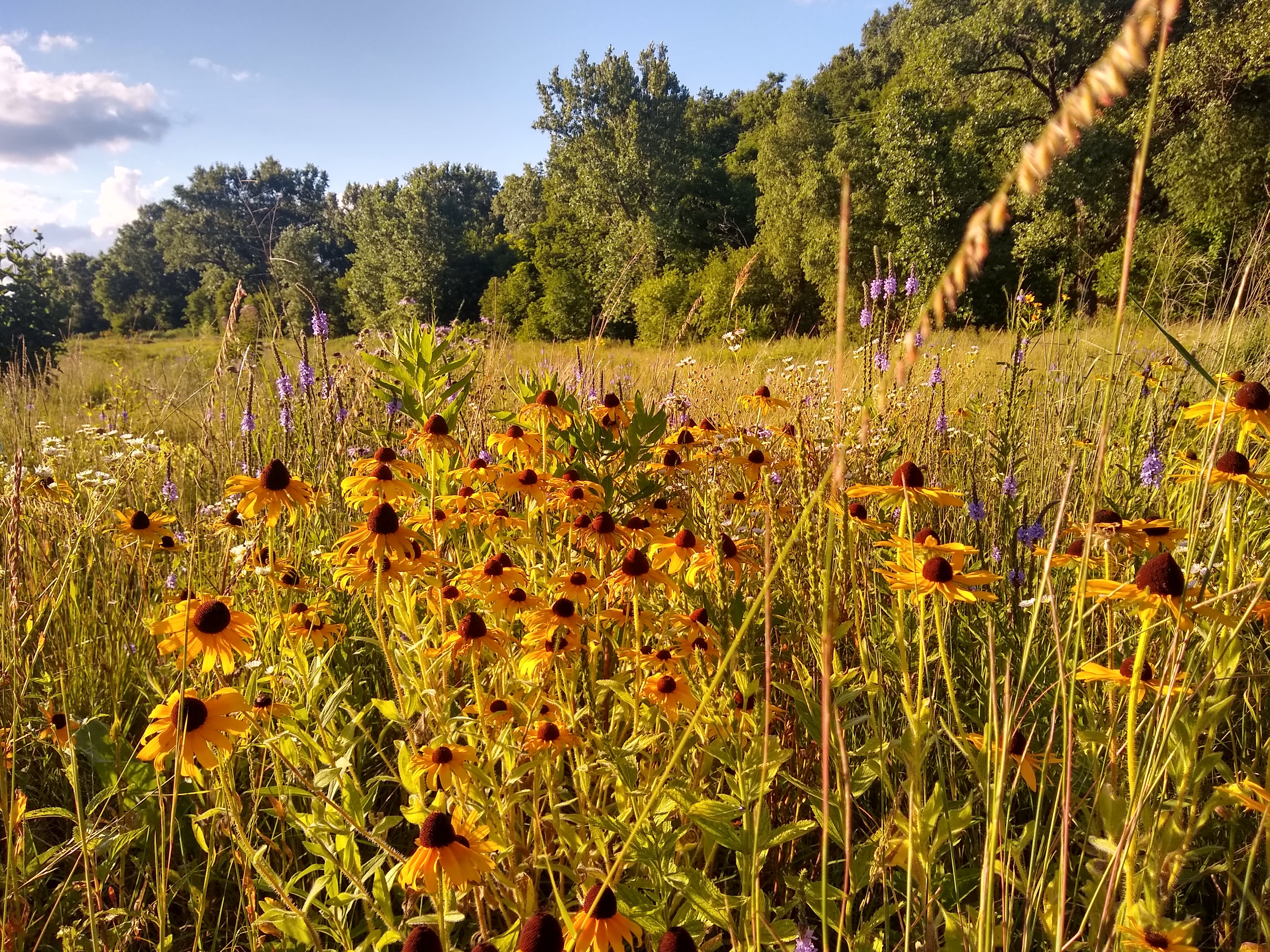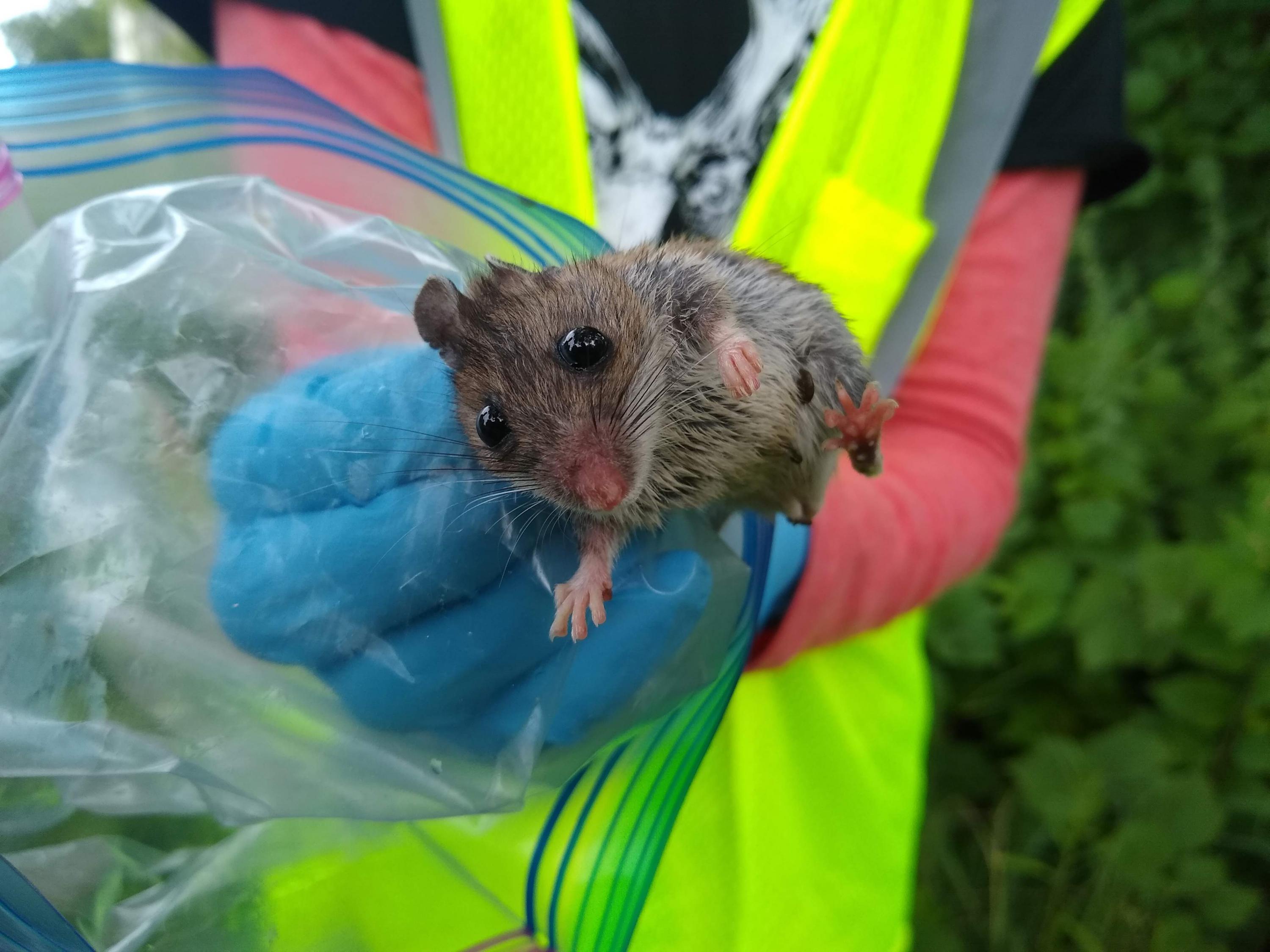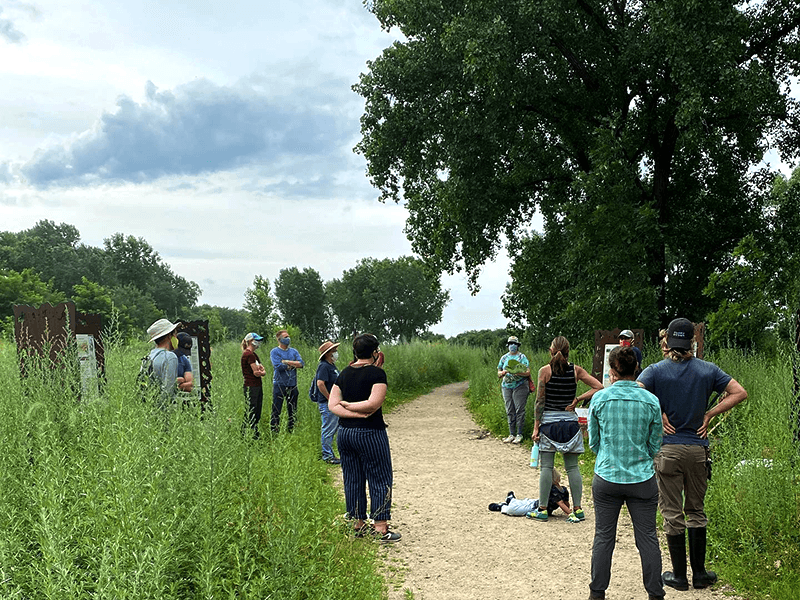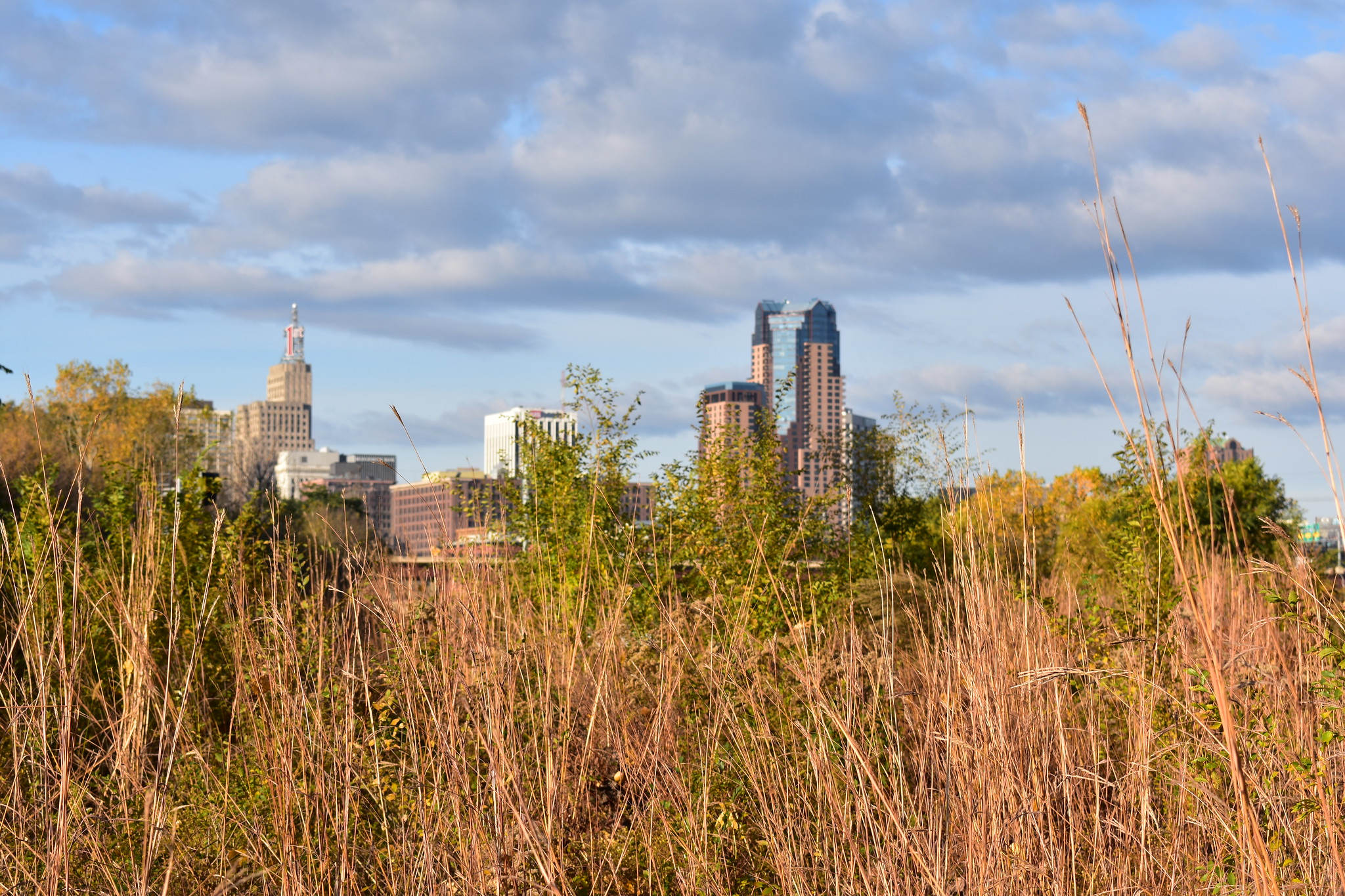Partnering for habitat and culture at Bruce Vento Nature Sanctuary

The setting sun bathes black-eyed Susans (foreground center) and hoary vervain (purple midground) in a warm glow in a section of restored prairie at Wakáŋ Tipi/Bruce Vento Nature Sanctuary. In this St. Paul natural area, we're collaborating on a plan to restore habitat while better honoring the site's history and ongoing importance to Dakota people.
Nestled between the bluff and the Mississippi River just east of downtown St. Paul sits the Bruce Vento Nature Sanctuary. Although it's near busy rail lines, a real sense of serenity and peace can be found while strolling through this lesser-known natural area.
The park is named for the late Bruce Vento, a longtime U.S. Representative from Minnesota's 4th congressional district and a passionate environmental advocate who played a key role in the designation of the metro Mississippi as a national park. After years of heavy industrial use, the sanctuary was remediated and opened to the public as a St. Paul Parks and Recreation site in 2005. Visitors can now find a mix of prairie and forest habitat here.
A new restoration plan
The site's original natural resource management plan, written in 2001 by Emmons and Olivier Resources, Inc. (EOR), focused on cleaning up or remediating pollution caused by the site's long industrial history. It also guided the much-needed return to native plant communities from the weedy plant species that had taken over the site since it was essentially abandoned in the 1970s.
FMR is now updating the plan with finer-scale steps needed to ensure healthy habitat, with a special focus on culturally important plant species and restoration techniques that better represent and honor the site's history and ongoing importance to Dakota people.
Funded by the Lower Phalen Creek Project, the plan update should be completed this fall. FMR is also applying to state funding sources to further the restoration in 2021 and beyond.
Conditions & critters
This spring and summer, FMR ecologists began cataloging plant and animal species at the site to better plot our next restoration steps.
Unfortunately, a cursory walk along the main sanctuary paths leads visitors past over 20 invasive and non-native plant species, many of which are classified as noxious weeds by the Minnesota Department of Agriculture. We also identified a new invasive species at the site — the Chinese mystery snail (its actual name), an unfortunate first for the sanctuary that we promptly reported to the Department of Natural Resources and other agencies.
But there were more positive (and fun) findings as well.
To get an idea of what animals are already using different restored areas of the sanctuary, FMR ecologists and our summer land conservation intern Michaela Hackbarth partnered with staff from St. Paul Parks and Recreation, Lower Phalen Creek Project and graduate students from the University of Minnesota.
We set small mammal traps in small areas in the prairie, forest and wetlands in the sanctuary, and recorded the species captured (and released!) over a three-day period. Species recorded included deer mice, white-footed mice and meadow voles!

This adult deer mouse lives in the prairie of the Bruce Vento Nature Sanctuary. We baited small mammals into no-harm traps called Sherman live traps with peanut butter and oat 'no-bake, safe-for-wildlife cookies' and released the critters as quickly as possible.
The wildlife and vegetation surveys will help us determine future restoration tasks, noting which areas are in relatively good ecological shape and need some simple invasive species removed, which ones might need additional native seeding and planting, and which ones need a full "redo" with complete removal and replacement of existing vegetation.
We're now planning the restoration of each area to provide healthy habitat while also honoring and engaging Dakota culture.
Incorporating culture and history
Usually, FMR ecologists select plants for a restoration that offer the greatest habitat benefit to pollinators, birds and other wildlife and improve both soil and water quality. For this project (and hopefully more in the future), we're also planning the restoration in a way that honors the site's cultural importance.
First, we're prioritizing plants important to Dakota people. Quite often, these are the same native species that make great habitat. Here are just a few of the culturally and ecologically important plants we plan to plant:
- Arrowhead — a wetland species used for its edible roots and medicinal properties whose tubers also benefits ducks, muskrats and turtles
- Prairie sage — a dry prairie species important for ceremonial purposes and as a tea for stomach issues that also provides nesting materials for native bees
- Purple coneflower — a prairie species used as an antiseptic to treat bites and sores and to stimulate the immune system; it also benefits butterflies, especially skippers
- Prairie rose — a wildflower used for teas and other herbal medicines that also attracts bumblebees
- Swamp and showy milkweed — wildflowers whose roots can treat asthma, rheumatism and other ailments, host plants for monarch butterflies and great late-season pollen sources for bees
In addition to adjusting the plant mix, we'll prioritize culturally important restoration practices such as prescribed burns. And because cottonwood is a culturally sacred species, we'll also be planting a new cottonwood tree into the forested area for any removed from a restored prairie area.
Lower Phalen Creek Project is conducting outreach to local Native communities about culturally important species and practices that should be included in the plan. FMR will be incorporating this feedback into the final version of the update.
Eventually, the restoration will also interface with the proposed Wakáŋ Tipi Center, named for the cave at the east end of the site — Dwelling Place of the Sacred. The center will honor the site's cultural significance and focus on the narratives of Dakota people in the region, while the surrounding restored areas provide an opportunity for environmental education and interpretation.
To learn more about and support Lower Phalen Creek Project's progress on Wakáŋ Tipi, visit their project page.
A collaborative effort

At our partnership's first stewardship event, held on July 25, volunteers removed hundreds of burdock plants from the woodland edges at the site, preventing their seed from spreading and making way for the emergence of native woodland plant species. Another event is planned for late August. (Photo by Lower Phalen Creek Project)
FMR is proud to join a long list of partners in the restoration of this unique site. St. Paul Parks and Recreation has worked for years with Lower Phalen Creek Project, Urban Roots and Mississippi Park Connection.
With much of the city's volunteer efforts stymied by COVID-related restrictions, FMR and Lower Phalen Creek Project are collaborating on a volunteer event series to continue the much-needed management of the site and help prepare for future restoration efforts. Lower Phalen Creek Project (LPCP) is recruiting participants from largely native organizations while FMR provides tools, supplies and ecological oversight.
As Sam Wegner, Lower Phalen Creek Project Program Manager describes: "We are really glad to be working with FMR. This partnership combines their ecological expertise with our organization's cultural knowledge and basis in Eastside communities to ensure that the restoration will not only create important and high-quality habitat for water and wildlife, but also provide a culturally relevant space that honors Wakáŋ Tipi/Bruce Vento Nature Sanctuary as a Dakota sacred site. FMR was also instrumental in our first volunteer event, providing the tools and guidance to help us engage our Native community in the restoration of the site. We're excited to keep advancing this work, and look forward to continuing the partnership!"
Get involved
For those who haven't been, the sanctuary is open to the public and well worth a visit. To deepen your involvement, keep an eye out for future volunteer announcements form LPCP, FMR and St. Paul Parks and Recreation. Thanks to our wonderful project partners, including all the FMR members who help keep these restoration projects going.

You can see the Downtown St. Paul skyline from the trails at Bruce Vento Nature Sanctuary.